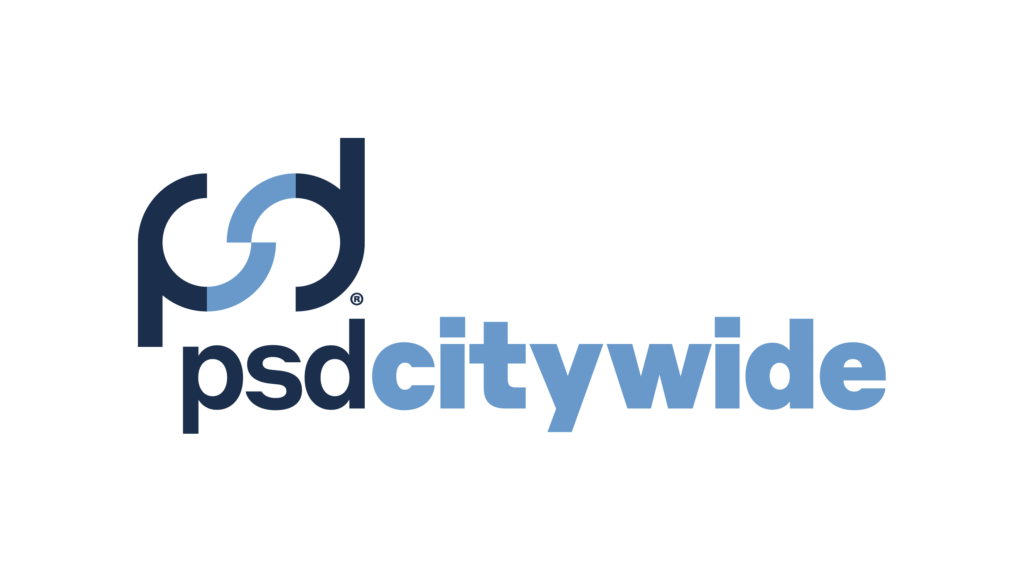Local governments are often overlooked in discussions about international initiatives, yet they consistently play a pivotal role in efforts to initiate change. Grassroots movements can lead to quicker and more permanent results since local leadership can more easily mobilize support from the public and create an inclusive decision-making process.
In the effort to adopt the Sustainable Development Goals (SDGs), member states of the United Nations have acknowledged the critical role of local governments. The discussion noted that local governments are important implementing bodies, policymakers, and catalysts for change that are best positioned to link local communities to global goals. In the efforts to breath life into the SDGs and ensure the document is not forgotten, local governments must be active participants. Asset management – a widely accepted local practice in Canada and elsewhere – acts as a key avenue to achieve many of the SDGs. Asset management practices are driven by a desire for sustainable service delivery through strategic planning, climate action, and inclusive governance. The following article will define the SDGs and how and why local governments should make concerted efforts to integrate considerations for the SDGs into their asset management practices.
The Sustainable Development Goals (SDGs)
The SDGs were adopted by 192 member states of the United Nations in 2015. The goals act as a universal call to action to end poverty, fight inequality, protect the planet, and ensure that all people enjoy peace and prosperity by 2030. The 17 goals are integrated objectives that define development that balances social, economic, and environmental sustainability.
The 17 goals are understood as the following:
1. No poverty
2. Zero hunger
3. Good health and well-being
4. Quality education
5. Gender equality
6. Clean water and sanitation
7. Affordable and clean energy
8. Decent work and economic growth
9. Industry, innovation, and infrastructure
10. Reduce inequalities
11. Sustainable cities and communities
12. Responsible consumption and production
13. Climate action
14. Life below water
15. Life on land
16. Peace, justice, and strong institutions
17. Partnerships for the goals
Each goal is more efficiently achieved through community-level engagement. One could argue that each goal would be impossible to achieve without the support of local stakeholders, including municipal and regional governments. Good health and wellbeing, clean water and sanitation, and quality education are promoted every day through common municipal programs and organizations. These goals are reflected in the core mandates of public libraries, health clinics, and municipal departments including affordable housing, parks and recreation, and public works and engineering.
Even more, municipal asset management practices can support the success of many of the SDGs, particularly goals 11, 13, 15, 16, and 17. For these reasons, the United Nations made considerable efforts to engage local governments in the planning and implementation of these objectives.
Comprehensive asset management programs consult with every municipal department and community stakeholders. Communication and cooperation are key to asset management; these features should be used to define the government’s capacity to enable justice and inclusivity through sustainable infrastructure and services.
Linking The Sustainable Development Goals (SDGs) and Asset Management Practices
At its core, asset management practices are about planning for long-term affordability and reliability of municipal services at a consistent level of service. Asset management necessitates leadership and cooperation across the community to plan for sustainable service delivery. The following SDGs are made possible through common municipal asset management practices.
Goal 11: Make cities inclusive, safe, resilient, and sustainable
This goal is about placing communities at the center of sustainable development. As communities grow and become more urbanized, development must also be progressive. Asset management practices integrate risk management to develop infrastructure and municipal services that are safe, sustainable, and resilient for the entire community. Triple bottom-line risk management measures risk through economic, social, and environmental lenses. Project prioritization based on risk assessments that include considerations for residents’ health and safety, protection of the natural environment, as well as economic feasibility lead to sustainable development. By 2030, member states have pledged to provide accessible, adequate, safe, and affordable: housing and basic services, transport systems, public transport, and green and public spaces. Each of these pledges are made possible through asset management practices.
Goal 13: Take urgent action to combat climate change and its impacts
This goal is about confronting climate change and managing its impacts. Local and regional governments are often on the frontline of dealing with the effects of climate change. It is vital for local governments to prioritize climate change adaptation and mitigation practices to preserve the safety and health of their residents by protecting the natural environment and building climate-resilient infrastructure and services. Progressive asset management practices include considerations for climate change and strive to build resilient infrastructure that can withstand the impacts of flooding, extreme events, and increasing temperatures. Member states have pledged to strengthen their capacity to adapt to climate change and extreme events; improve education and institutional capacity for adaptation and mitigation; and promote mechanisms and tools for effective climate change planning and management. Asset management practices and climate change adaptation as an integrated practice are focused on achieving these goals.
Goal 15: Protect, restore, and promote sustainable use of terrestrial ecosystems, sustainably manage forests, combat desertification, and halt and reverse land degradation and halt biodiversity loss
The 15th goal is about protecting our natural resources and wildlife habitats. Local governments’ role of water, sanitation, solid waste, and park management coupled with their position of community leadership make them integral players in the efforts to protect the environment. Green infrastructure management encourages the preservation of natural assets by attributing a financial and social value to them and integrating them into municipal asset management programs.
Local governments own and manage natural assets such as wetlands, forests, parks, fields, soil, and bodies of water and enhance assets such as bioswales, urban trees and parks, stormwater pond, and raid gardens. Each of these assets provide a service to the community whether they are facilitating stormwater management, promoting clean water and air, acting as carbon sinks, providing shade, and/or supporting mental health. Member states have pledged to take action on conservation, restoration, and the sustainable use of vegetation, land, and freshwater by 2020.
Goal 16: Promote just, peaceful, and inclusive societies
This goal is about keeping people safe and running an effective and fair government. Human rights are key in shaping sustainable municipal services. Asset management can promote human rights by prioritizing inclusive policymaking and service delivery. Comprehensive asset management programs consult with every municipal department and community stakeholders. Communication and cooperation are key to asset management; these features should be used to define the government’s capacity to enable justice and inclusivity through sustainable infrastructure and services.
Goal 17: Revitalize the global partnership for sustainable development
This goal is about working across levels of government and internationally to achieve the SDGs. Local governments are ideally positioned to encourage partnerships between public bodies, the private sector, and community groups. Local governments can support efforts to gather reliable local data to inform policymaking and decision-making. Asset management practices focus on building reliable datasets to develop a comprehensive understanding of the residents, geography, environment, and infrastructure to define the community’s needs. Throughout the COVID-19 pandemic, vulnerable populations have become more vulnerable further emphasizing the need to not dismiss other priorities and goals.
The critical linkage between the SDGs and local government asset management is clear, however, it is crucial to also open a dialogue to define how and why local leaders should legitimately adopt the SDGs and integrate them into official planning processes and documents.
Integration of SDGs and Asset Management Practices in Action
Elected local leaders and municipal practitioners wear many hats, why should they dedicate their time and efforts to consider the official Sustainable Development Goals? The first reason is rather altruistic: local governments can help localize the SDGs and make sure that they are living objectives. Without the support of local governments around the world it is not possible for all member states to achieve the SDGs.
The second reason is to marry humanitarian efforts with economically driven decision-making. The SDGs encourage balance between economic, environmental, and social factors therefore ensuring that sustainable development includes consideration for the physical and mental well-being of all residents. The third reason that local governments should consider SDGs is to be part of a global community that supports knowledge-sharing and encourages innovation as it relates to municipal-level sustainable development.
The final reason is to validate and legitimize municipal strategies through internationally agreed-upon goals. By linking municipal initiatives to the SDGs, it can secure funding and support from other levels of government and bigger for-profit and nonprofit organizations.
To integrate SDGs local governments should take steps to first educate policymakers about the SDGs and the benefits of integrating them into municipal decision-making. Local governments should also educate and consult with the public to identify community needs and define local objectives that align with the SDGs. Local governments should then determine how to link the SDGs to important planning and policy documents such as their asset management plan and strategic plan. For example, each item on the strategic plan can likely be linked back to one or more of the SDGs. Local governments can also launch a committee that will bolster community and council support for initiatives related to the SDGs and support the adoption of a policy or pledge to achieve the goals. Finally, once local governments have integrated considerations for the SDGs it is critical to measure and monitor success. The SDGs come along with defined objectives and timelines that local government should seek to follow.
In Canada alone, there are numerous local governments that include meaningful integration of the SDGs into their strategic documents and decision-making processes. Some communities that provide helpful examples of ways to link SDGs to municipal activities include: Fort St. John, British Columbia; Winnipeg, Manitoba; Peterborough and Kitchener, Ontario; and Bridgewater, Nova Scotia. Each of these communities acknowledge the importance of participating in international movements to develop and progress sustainably. By integrating SDGs into any municipal programs, including asset management practices, the local and global community will reap the benefits of inclusive and well-balanced development.



